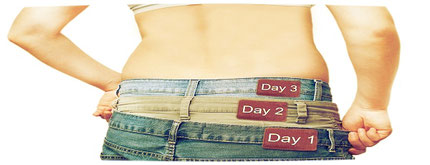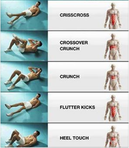
"Weight gains aren't failures, they're learning curves" ― Rachel Stevenson
Have you ever wonder how many pounds (or kg) you should be losing ideally per week if you were following the right plan? if so this is the right article for you
What should be an ideal weight loss rate?
If you have properly created the ideal caloric deficit and are therefore eating (or burning) your ideal amount of calories per day, it will cause you to lose weight at the ideal rate. This is what that rate should be for the majority of us:
The Ideal Rate Of Weight Loss should be between 0.5 – 2 pounds (0.25 - 1 kg) weight lost per week
That range is a bit broad, but that’s because the ideal rate of weight loss will (and should) vary based on how much fat a person has to lose. Here’s a chart that explain this a little further....
The Ideal Rate Of Weight Loss Based On How Much Fat You Need To Lose
| Amount Of Fat To Lose | Ideal Rate Of Weight Loss |
|---|---|
| Above Average | 2lbs (or more) per week. |
| Average | 1-2lbs per week. |
| Below Average | 0.5-1lb per week. |
Chart info :
- Someone with an above average amount of fat to lose (say 100lbs, for example) can (and probably should) lose it at a rate of 2lbs (or more) per week, at least for a certain amount of time.
- Someone with a more average amount of fat to lose (say 30lbs, for example) should lose it at a rate of 1-2lbs per week.
- Someone with a below average amount of fat to lose (say 10lbs or less, for example) would be best served to lose it at a rate of 0.5-1 pound per week.
Be ready for metabolic adaptation
It’s also possible for a person to be in 2 or 3 of the categories shown on the chart above at different stages of their weight loss. Meaning, a person might start off with a lot of fat to lose at which point they might lose it at a rate of 2lbs(1kg) or more per week for a while. They’ll then hit a point where that rate slows down a bit to 1-2lbs(0.5-1kg) per week for a while. And then, when they are almost done losing all the fat they needed to lose, it may only happen at a rate of 0.5-1lb(0.25-0.5kg) per week at that point. This is due to metabolic adaptation, adaptive biochemical and physiological changes that reduce metabolism in response to food or activity changes
Either way, creating the ideal caloric deficit will always cause weight to be lost at the rate that’s most ideal for you. For example, a 20% below maintenance calorie deficit.... Let’s say some person (male or female) had a daily calorie maintenance level of 2500 calories. They’d first figure out that 20% of 2500 is 500 (2500 x 0.20 = 500). This means they should create a caloric deficit of 500 calories each day. In this example, that would mean eating 2000 calories per day)
Do you want to be part of an experimental health program?
We encourage you to test what has been discussed on this blog by yourself and let us know about your experience, your progress and achievements in the comments section below. The results of these experimental program will be presented at international conferences and hopefully published in high impact medical and scientist journals. Your involvement and interaction as well as your contribution is important for us since the information and voluntary donations you provide will be further used for adapting, modifying and improving our programs.
Important notice
This Online Personal Trainer's approach is recommended for healthy adults only. This site is not intended for use by minors or individuals with any type of health condition. Such individuals are specifically advised to seek professional medical advice prior to initiating any fitness or nutrition effort or program.
Recommended articles








https://www.vibrationplateinfo.com (Tuesday, 28 November 2017 10:43)
Your blogs and each of its stuff is so pleasurable and valuable it is making me come back soon.